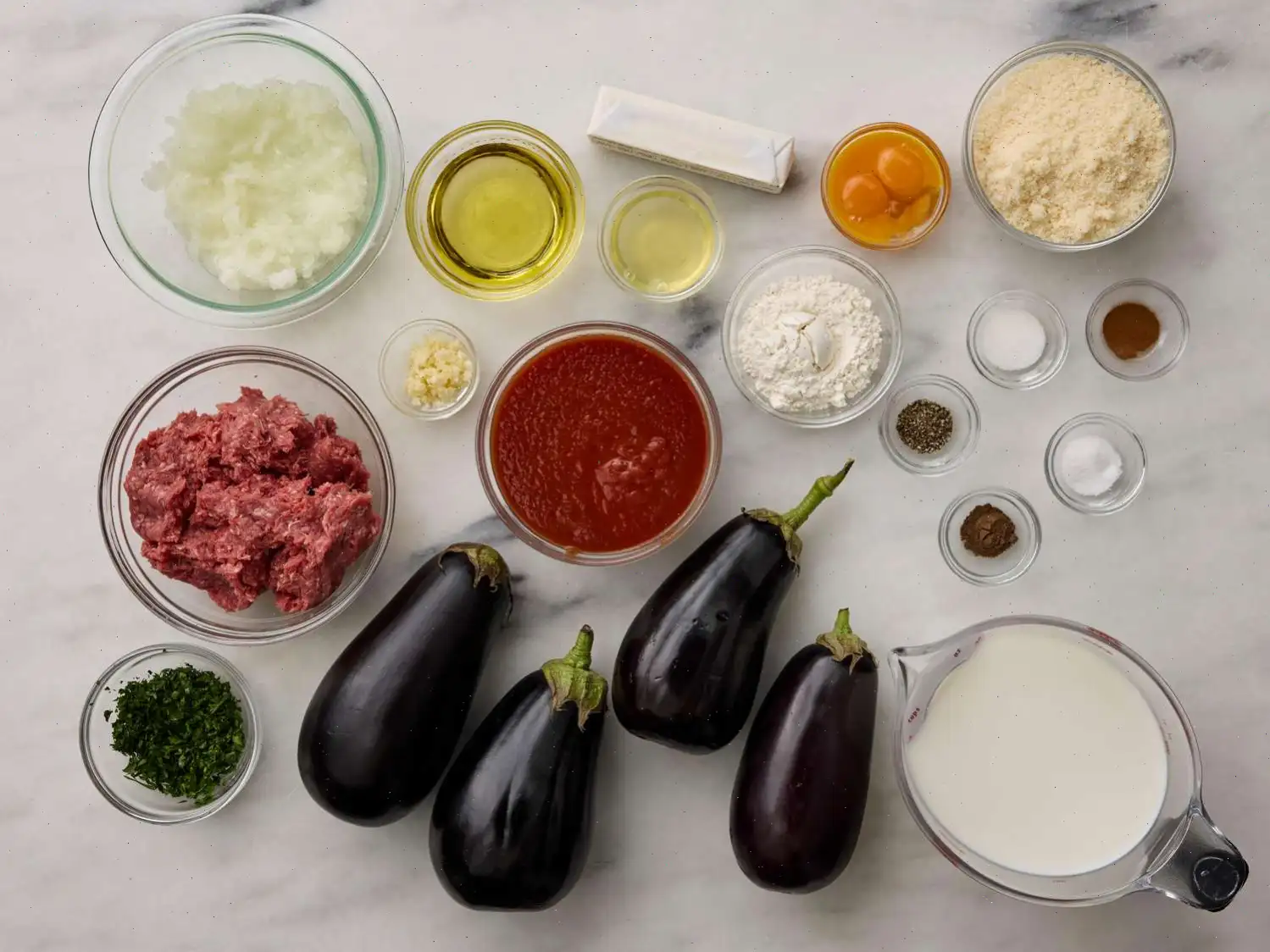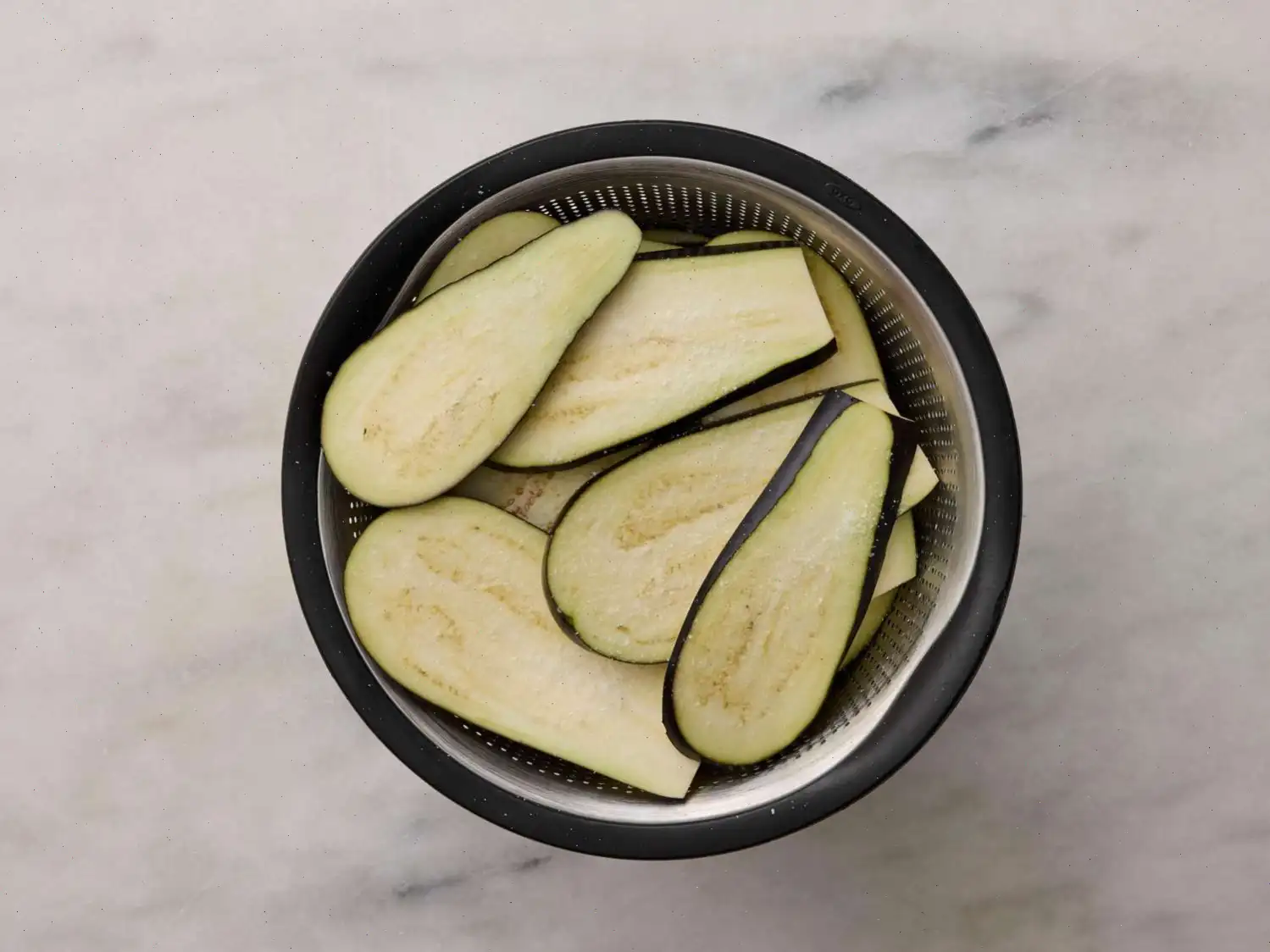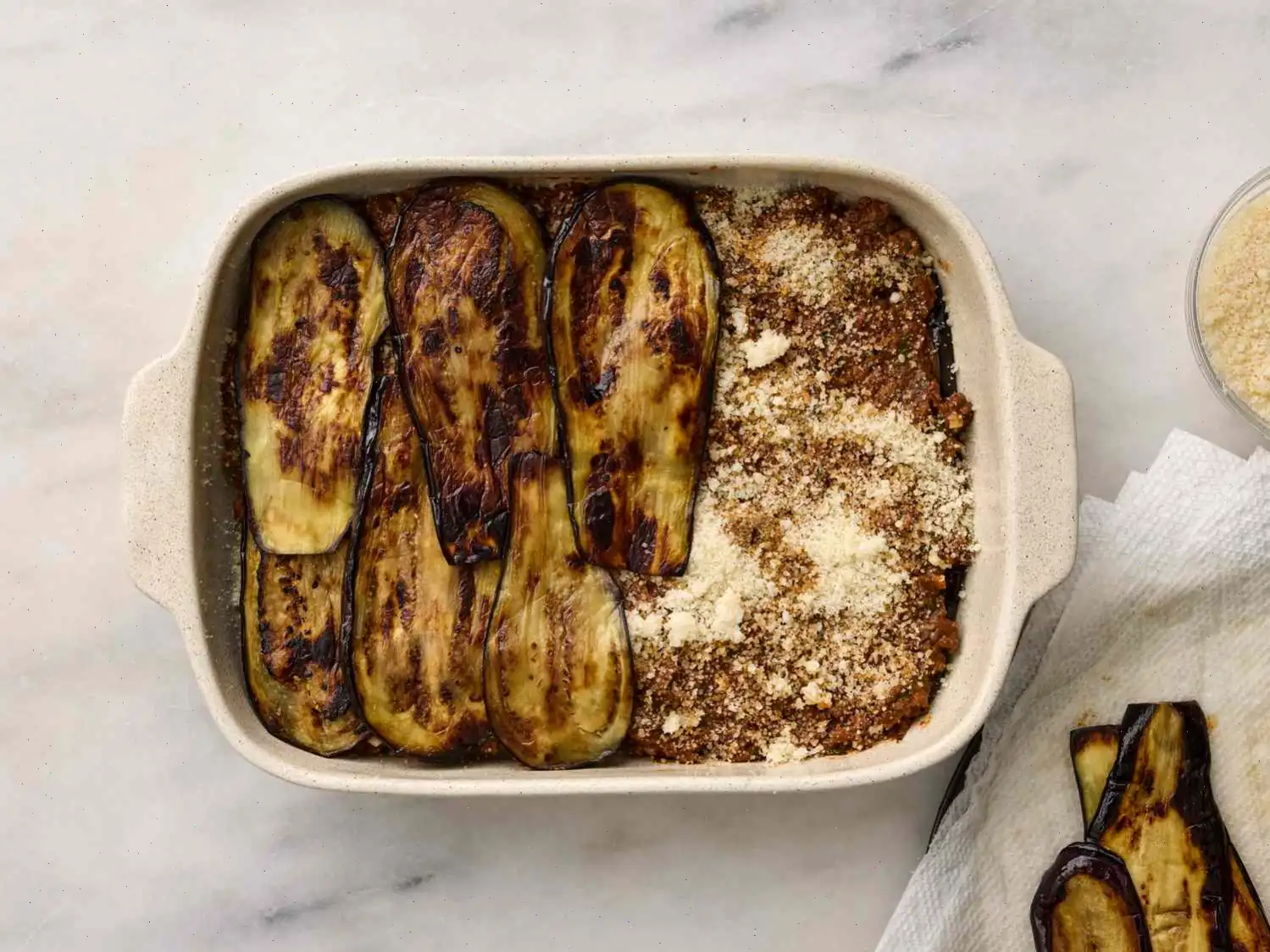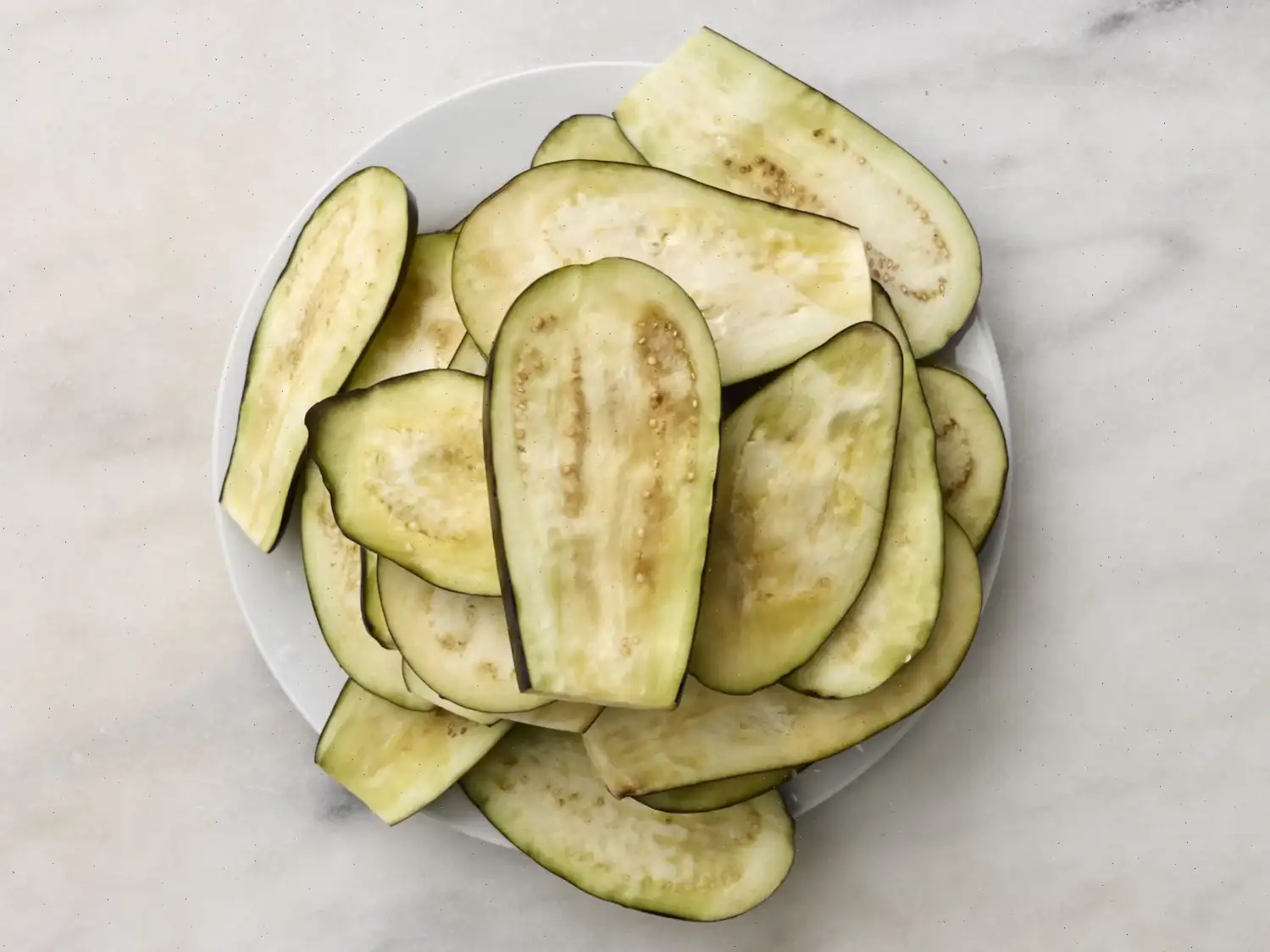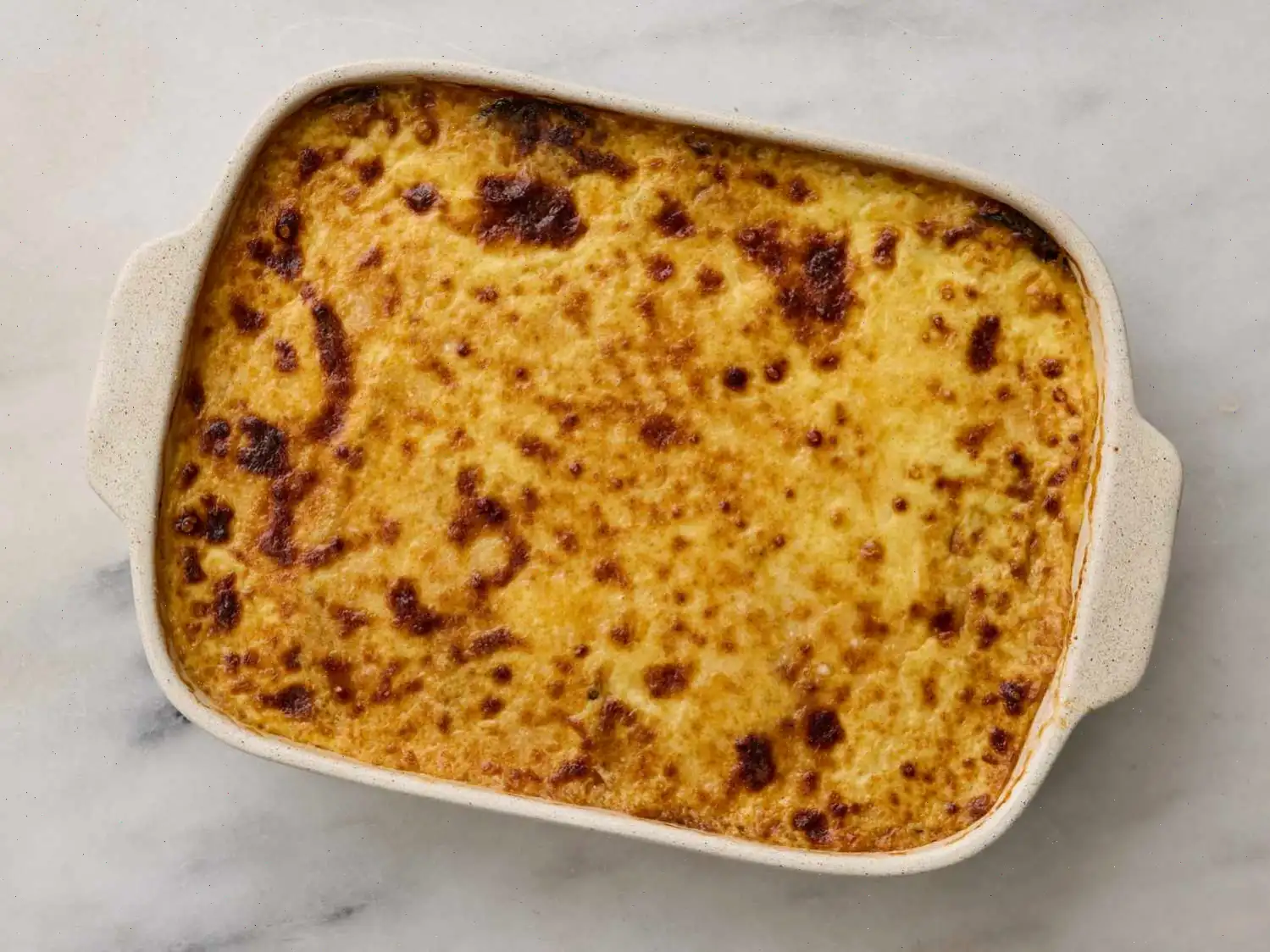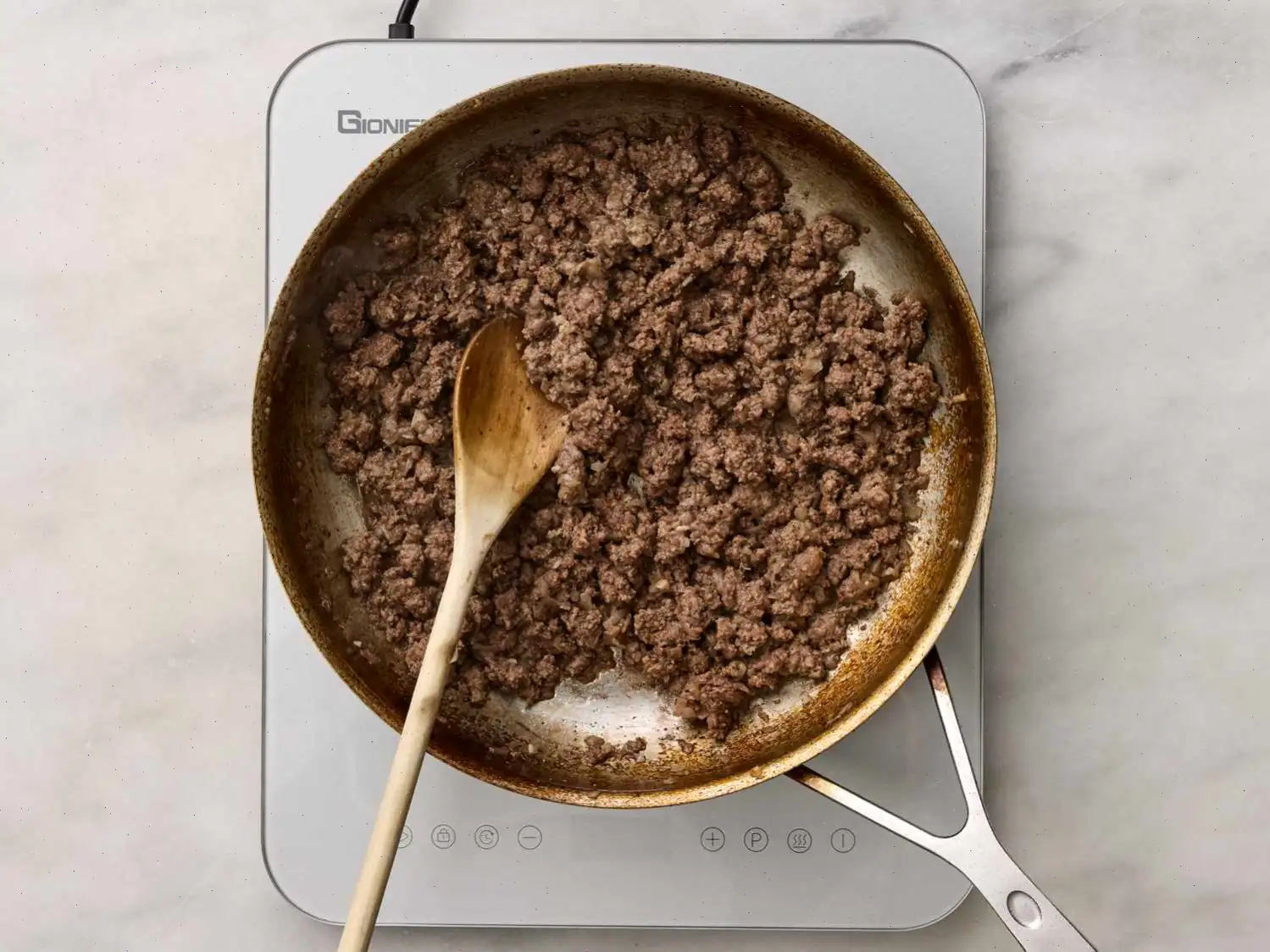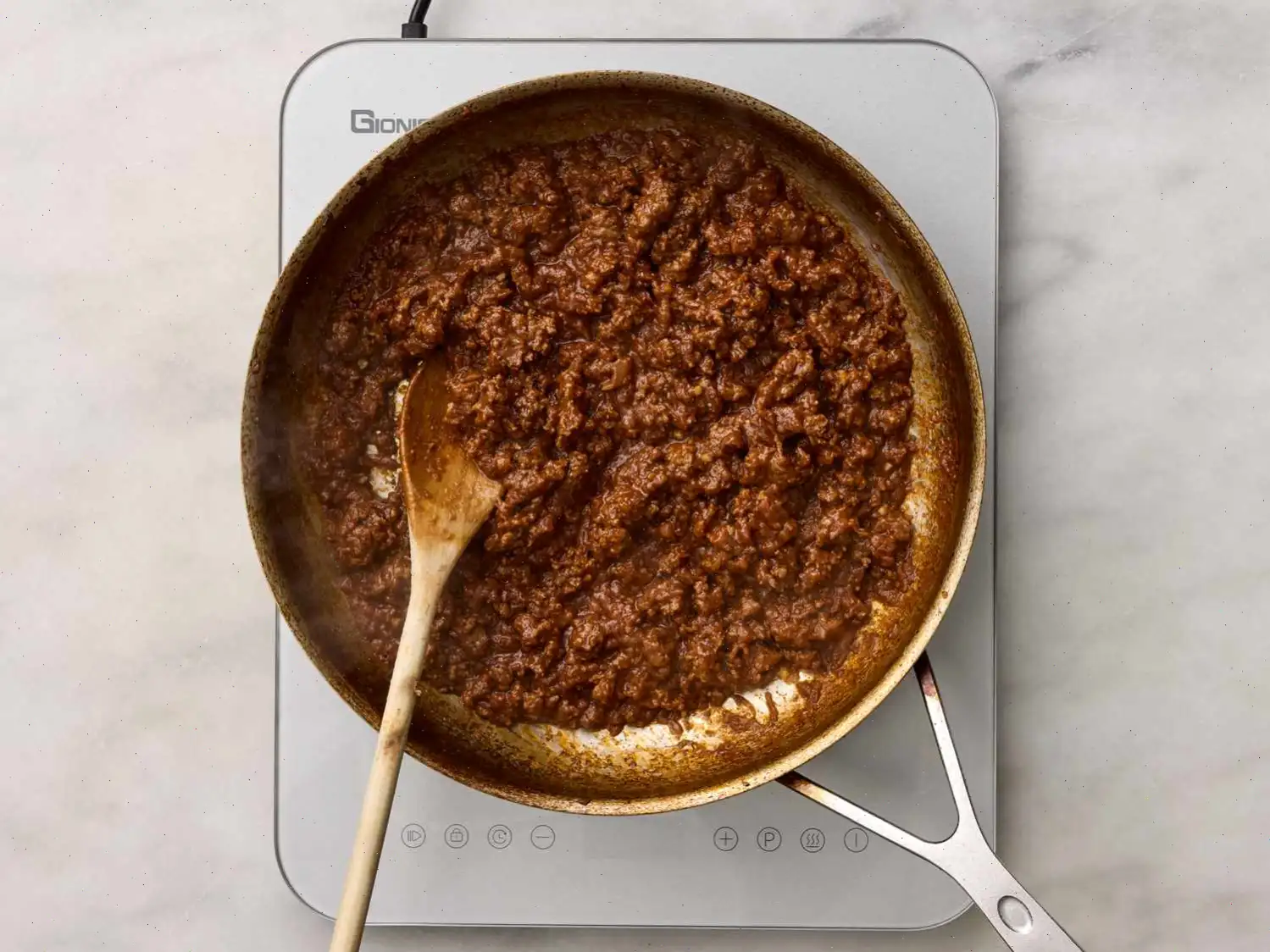
Authentic Greek Moussaka Recipe
Ingredients
- 4 medium eggplants, cut lengthwise into 13-inch slices
- Salt to taste
- 4 cups milk
- 1 stick butter
- 6 tablespoons all-purpose flour
- 3 large egg yolks, beaten
- 7 tablespoons olive oil, divided
- 2 medium onions, grated
- 3 cloves garlic, finely chopped
- 1 pound lean ground beef
- teaspoon ground allspice
- teaspoon white sugar
- 1 pinch ground cinnamon
- Salt and ground black pepper to taste
- 1 (14 ounce) can tomato sauce
- 4 tablespoons chopped fresh parsley
- 1 large egg white, lightly beaten
- 1 cups freshly grated Parmesan cheese
Directions
- Start by gathering all the ingredients needed for the recipe.
- Sprinkle the eggplant slices with salt and place them in a colander set in the sink or over a plate. Let them sit for 30 minutes to 1 hour to allow the salt to draw out any bitterness from the eggplant.
- While the eggplant is resting, prepare the bechamel sauce. Heat the milk in a saucepan until it is almost boiling.
- In a separate skillet, melt the butter over medium heat. Whisk in the flour to create a smooth paste.
- Reduce the heat and slowly pour in the hot milk, whisking constantly. Continue whisking until the bechamel sauce thickens. Season with salt to taste. Remove from heat and allow the sauce to cool slightly.
- Rinse the eggplant slices under cold running water to remove the salt. Squeeze out excess liquid and pat them dry with paper towels.
- Whisk the egg yolks into the slightly cooled bechamel sauce.
- In a large skillet, heat 3 tablespoons of olive oil over medium heat. Cook the eggplant slices in batches, frying each side until lightly browned (about 3 minutes per side). Transfer the cooked slices to a plate lined with paper towels to drain excess oil.
- Preheat your oven to 375F (190C) and grease a 9x13-inch baking dish with olive oil.
- In the same skillet, heat the remaining 4 tablespoons of olive oil over low heat. Cook the grated onions until soft, about 4 minutes. Add the garlic and cook for another 1 minute.
- Increase the heat to medium-high and add the ground beef. Cook, stirring occasionally, until browned and crumbly, about 5 minutes.
- Season the beef mixture with allspice, sugar, cinnamon, salt, and pepper. Stir in the tomato sauce and bring the mixture to a simmer. Continue cooking until the excess liquid has evaporated and the mixture becomes dry (about 15 to 20 minutes).
- Stir in the chopped parsley and remove the skillet from the heat. Allow the beef mixture to cool slightly, then stir in the lightly beaten egg white.
- In the prepared baking dish, arrange a layer of eggplant slices. Top with all of the beef mixture, then sprinkle 1/3 of the Parmesan cheese over the beef.
- Add another layer of eggplant slices, followed by the remaining 1/3 of Parmesan cheese. Pour the bechamel sauce over the top, then sprinkle the final 1/3 of Parmesan cheese on top.
- Bake in the preheated oven for 45 minutes to 1 hour, or until the top of the moussaka is set and golden brown.
- Once done, remove the dish from the oven and allow it to rest at room temperature for 10 to 15 minutes before slicing and serving.
Cooks Note
Pre-cooking the eggplant is essential. Instead of frying the slices, you can lightly brush olive oil on both sides of the eggplant, place them in a single layer on a baking sheet, and bake them at 400F (200C), turning once halfway through for a healthier option.
If you'd like to lighten the meat sauce, try using a mix of 50% ground pork and 50% ground beef instead of using all beef.
Nutrition Facts (per serving)
| Nutrition Information | Per Serving |
|---|---|
| Calories | 617 |
| Total Fat | 44g (57%) |
| Saturated Fat | 19g (93%) |
| Cholesterol | 173mg (58%) |
| Sodium | 678mg (29%) |
| Total Carbohydrate | 33g (12%) |
| Dietary Fiber | 11g (38%) |
| Protein | 26g (52%) |
| Vitamin C | 15mg (16%) |
| Calcium | 371mg (29%) |
| Iron | 3mg (17%) |
| Potassium | 1224mg (26%) |


History of Moussaka
Moussaka is a beloved Greek dish with a rich history rooted in Mediterranean cuisine. While its exact origins are debated, many believe it was influenced by both Middle Eastern and Balkan culinary traditions. It is closely associated with the Ottoman Empire, which occupied Greece for several centuries. The layers of eggplant, ground meat, and bchamel sauce are reminiscent of similar dishes found across the Levant and North Africa, such as the Turkish musakka and the Lebanese makdous.
Regional Features
While moussaka is enjoyed across Greece, regional variations exist, each offering unique twists on the classic recipe. In mainland Greece, moussaka is typically made with eggplant, while in some coastal areas, potatoes may be included as an additional layer. Northern Greek versions, especially those from Macedonia, often feature a meat mixture with both lamb and beef. In some regions, the bchamel sauce may be flavored with a hint of nutmeg, enhancing its creamy richness.
Differences from Similar Dishes
Moussaka is often compared to lasagna due to its layered structure. However, the key difference lies in the ingredients and the absence of pasta in moussaka. While lasagna uses sheets of pasta, moussaka traditionally relies on fried or baked eggplant as the primary layer. Additionally, the rich bchamel sauce in moussaka, made with butter, milk, and egg yolks, is much thicker and creamier than the tomato-based sauce commonly used in lasagna. Furthermore, the use of aromatic spices like cinnamon and allspice in the meat sauce sets moussaka apart from other similar baked dishes.
Where Moussaka is Typically Served
Moussaka is often considered a comfort food and is served in various settings, from casual family dinners to special occasions. It is a popular dish in Greek tavernas and is often featured on festive tables. In Greece, moussaka is typically enjoyed as part of a larger meal, accompanied by a fresh salad and perhaps some crusty bread. It is also a common dish served during religious holidays and celebrations, particularly in the colder months when hearty meals are appreciated.
Interesting Facts
One interesting fact about moussaka is that it became widely popular in the West during the 20th century, largely thanks to the renowned Greek chef Nikolaos Tselementes, who refined the dish and introduced it to the global culinary scene. Tselementes is credited with adding the bchamel sauce to the recipe, which is now considered a quintessential element of moussaka. Additionally, moussaka can be made in advance and stored in the refrigerator for a day or two, often enhancing its flavors. Many people claim that moussaka tastes even better the next day after the flavors have had time to meld together.
You can listen to this recipe in AI audio format. Simply click the play button below to listen to the content in a format that suits you best. It’s a great way to absorb information on the go!
FAQ about Authentic Greek Moussaka Recipe
Comments
Heather White
03/30/2025 03:31:34 AM
Fantastic! I love how the béchamel sauce thickens perfectly when cooked. I also appreciate the absence of potatoes - it's not necessary (and keeps the dish low-carb). I used ground chicken since that's what I had available, and didn't bother peeling the eggplants - the result was excellent. Will definitely be making this again.




